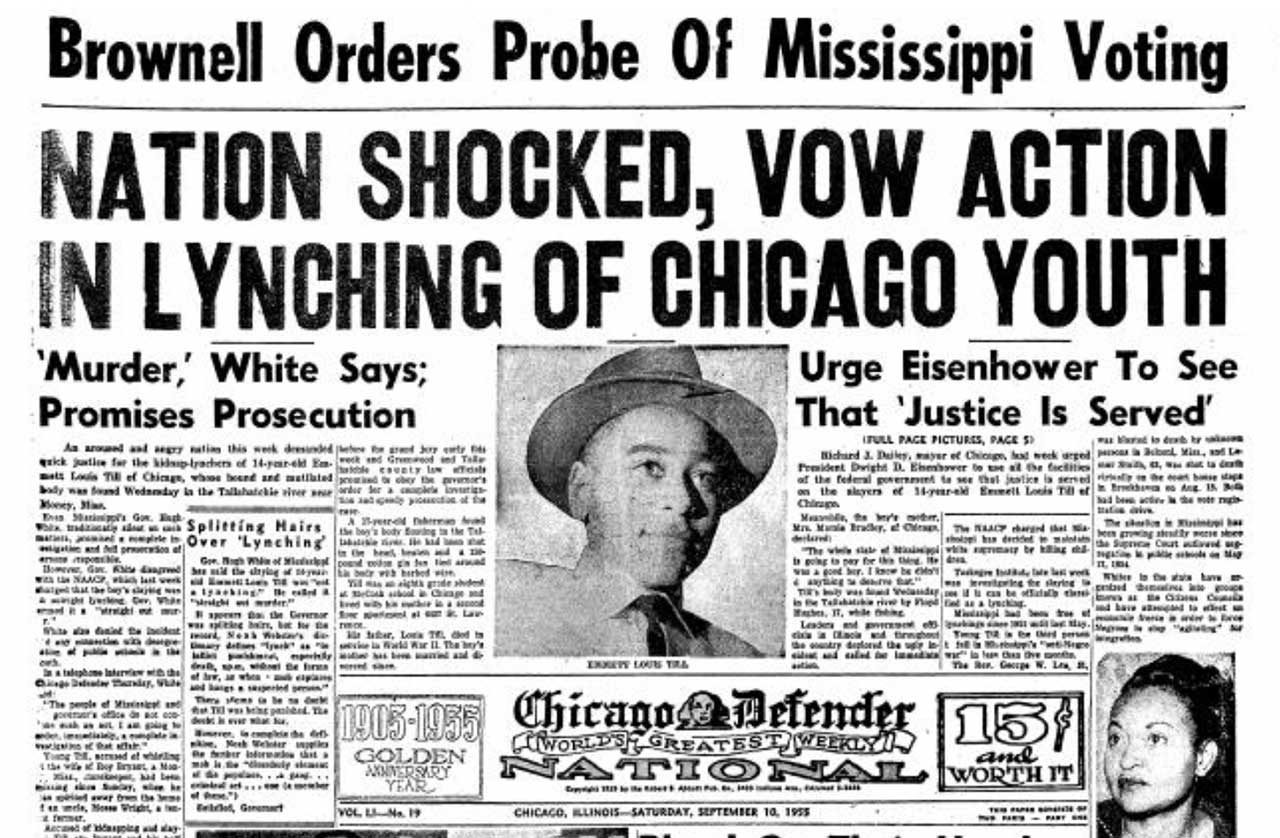Emmett Till’s brutal murder in 1955, fueled by racist accusations and violence, became a pivotal moment in the American Civil Rights Movement, exposing the horrors of Jim Crow and sparking national outrage. The open-casket funeral chosen by Mamie Till-Mobley, Emmett’s mother, forced the world to confront the brutality of his lynching and galvanized support for civil rights. Despite eyewitness accounts and confessions, Emmett Till’s killers were acquitted by an all-white jury, showcasing the deep-seated racial injustice of the time. Emmett Till’s legacy continues to resonate today, reminding us of the ongoing fight for racial equality and the importance of confronting injustice.
The Brutal Murder of Emmett Till
The summer of 1955 witnessed the horrific murder of Emmett Till, a 14-year-old African American boy visiting relatives in Money, Mississippi, from his home in Chicago. This tragic event, rooted in the deep-seated racism of the Jim Crow South, became a turning point in the fight for civil rights.
Till’s encounter with Carolyn Bryant, a white woman, at a local grocery store proved fatal. The details of this interaction remain somewhat unclear. Some accounts suggest he whistled at her; others propose he merely spoke to her, perhaps even with a stutter that could have been misinterpreted in the tense racial climate. Whatever transpired, the incident was tragically misconstrued and grossly exaggerated.
Days later, in the dead of night, Roy Bryant (Carolyn’s husband) and J.W. Milam (his half-brother) abducted Emmett from his great-uncle’s home. What followed was a horrific ordeal of violence and torture. Emmett was brutally beaten, shot in the head, and his body, weighted down with a cotton gin fan, was thrown into the Tallahatchie River. His mutilated remains were discovered three days later. The sheer brutality shocked the nation.
If you’re interested in exploring other historical events and cultural phenomena, you might enjoy reading about the Constantine movie or the Cornwell Auction in Nebraska. These seemingly disparate topics offer glimpses into different aspects of society and culture.
The Trial and Its Aftermath
The trial of Bryant and Milam in September 1955 became a national spectacle, exposing the deep flaws within the Jim Crow South’s justice system. Despite the evidence and testimonies presented, an all-white jury swiftly acquitted the two men after only an hour of deliberation. This verdict, a blatant miscarriage of justice, ignited outrage across the country, particularly within the African American community.
Months later, Bryant and Milam confessed to the murder in a paid interview with Look magazine, shielded from further prosecution by double jeopardy laws. This act further fueled the growing sense of injustice surrounding the case.
Mamie Till-Mobley, Emmett’s mother, demonstrated immense courage by choosing an open-casket funeral. Her decision, meant to expose the brutality of her son’s murder to the world, had a profound impact. The photographs of Emmett’s mutilated body, published in Jet magazine and other publications, seared the image into public consciousness. This act of defiance became a pivotal moment, galvanizing the Civil Rights Movement and transforming grief into a powerful call for change.
Carolyn Bryant Donham’s Role and Legacy
Carolyn Bryant Donham, the woman whose accusation initiated the tragic chain of events, died in April 2023 at the age of 88. While her death may mark the closing of one chapter, the pursuit of justice and understanding surrounding Emmett Till’s murder continues.
In 2008, Donham admitted to fabricating parts of her original testimony. However, despite this confession, she never faced criminal charges related to Till’s death. This lack of legal accountability has frustrated many and underscores the complexities of pursuing justice decades after the fact. Some legal experts suggested that the passage of time and the challenges of proving her direct involvement in the murder itself presented insurmountable legal hurdles.
Adding to the complexity, a grand jury in 2022 opted not to indict Donham on charges of kidnapping and manslaughter, citing insufficient evidence. This decision further solidified the sense of injustice surrounding the case. While it is difficult to determine the exact extent of Donham’s culpability, her role in the tragedy remains a significant and controversial part of the narrative.
Emmett Till’s Enduring Legacy
Emmett Till’s story stands as a stark reminder of the horrors of racial injustice and the ongoing struggle for equality. His murder sparked a national outcry and helped propel the Civil Rights Movement forward. While significant progress has been made since 1955, the fight for racial justice continues.
Ongoing research into the case continues to shed light on the events and their broader historical context. New evidence and interpretations may emerge, offering further insight into this pivotal moment in American history.
The story of Emmett Till is a testament to the power of remembrance and a call to action for a more just and equitable future. It underscores the importance of continued research, open dialogue, and a commitment to learning from the past to build a better future.
- Star Ring Trends: Etsy vs Amazon - March 28, 2025
- Boost Pollinator Habitats: Baby Blue Eyes Sustainable Farming Guide - March 28, 2025
- Protect Big Black Bears: Effective Conservation Strategies - March 28, 2025
















